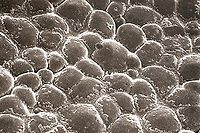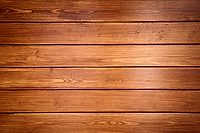Advances in Self-Healing, Chromate-Free Conversion Coating for Magnesium Alloys
NEI has developed a chromate-free conversion coating for magnesium alloys that independently provides exceptional corrosion resistance










Or read in our August Digital Edition.
Coatings applied to the surface of magnesium parts can slow the rate of corrosion and maintain structural integrity and appearance. Over the years, the most widely used coatings for magnesium alloys have contained hexavalent chromium, also known as hex chrome or chromate. A chromate coating has the special ability to “self-heal,” i.e., repair itself if scratched or damaged, thereby providing active corrosion protection of the underlying metal. In recent years, however, the use of chromate has been drastically curtailed because of its carcinogenic nature and harm to the environment.
The first coating layer in direct contact with the metal surface, applied prior to paint (primer and topcoat), is called a pretreatment. Many pretreatments are thin conversion coatings, a few tenths to several micrometers thick, that form by chemical reaction of a liquid formulation with the outermost layers of the solid metal surface.
For over 75 years, the best performing and most reliable conversion coatings were made with chromate. Chromate conversion coatings (CCCs) are self-healing and provide excellent adhesion with overlying paint. Although chromate-free conversion coatings are available, the corrosion resistance offered by them, in absence of the ability to self-heal, does not match that of the CCCs.
NEI has developed a chromate-free conversion coating for magnesium alloys that independently provides exceptional corrosion resistance and also improves adhesion with an overlying paint layer (primer). Additionally, this coating is able to self-heal. The conversion coating, NANOMYTE® PT-60, performs as well as or better than a conventional CCC in terms of corrosion protection. Results also show performance approaching that of a state-of-the-art anodized coating, which is another well-established, but more expensive, technology to protect magnesium alloys.
For long-term corrosion protection, a multilayer coating system consisting of pretreatment, primer and topcoat is used. The paint principally acts as a barrier layer against corrosion. One of the key factors that determine the performance of the coating system is the adhesion of the paint layer to the alloy substrate. The surface chemistry of the conversion coating has to be tailored for primer compatibility based on the desired application.
In order to address the corrosion protection needs of different industries, including military, aerospace, automotive and mobile computing, Mg AZ91D panels (both untreated and pretreated with CCC and PT-60) were coated with selected primers. Figure 1 compares the performance of panels coated with two military-specified primers after 500 h of exposure in the salt spray environment following the ASTM B117 standard protocol.
A conventional two-component, lead- and chromate-free epoxy primer was used to meet the MIL-DTL-53022D - Type I (white) specification. The primer can be used under MIL-PRF-85285D (non-aircraft) polyurethane topcoats, or polyurethane chemical agent-resistant coatings (CARC) specified in MIL-DTL-53039B Type 1, MIL-DTL- 64159 or MIL-PRF-22750F epoxy topcoats.
In addition to conventional liquid primers, powdered plastic resin (powder coat) and electrodeposited (e-coat) primer were also applied on the conversion coatings to measure the corrosion resistance of the coating system. Figure 2 compares the performance of tan powder coated panels and e-coated (black epoxy) primer panels after 500 h of exposure in the salt spray environment following the ASTM B117 standard protocol.
It is evident that the buildup of corrosion products in the scribe is greatest for the Mg AZ91D panels without any pretreatment. CCC resulted in reduced corrosion on the primed panel, while further reduction in corrosion and blistering was obtained in the case of PT-60.
Recently, NEI has worked with the U.S. Army Armament Research Development and Engineering Center (ARDEC) at Picatinny Arsenal, NJ, to successfully demonstrate the effectiveness of PT-60. NEI coated two magnesium base plates for a M224 60 mm light mortar application. The prototypes were made at Picatinny Arsenal, cut from the alloy Mg WE43. This was the first time PT-60 was applied on this alloy (Figure 3). Following the PT-60 treatment, an epoxy e-coat and then a powder coat were put on for prototype feasibility purposes (Figure 4). This effort addresses the need for the development of chromate‐free coating systems for lightweight alloys to be used in weapon systems for the warfighter.
NANOMYTE PT-60, a patent-pending coating formulation, is a commercial product and is sold as a liquid in 1- to 5-gallon pails or 55-gallon drums. Analogous environmentally friendly, self-healing conversion coatings have been developed for other metal alloys, including aluminum, zinc plated and galvanized steel.
For more information, visit www.neicorporation.com.
References
Looking for a reprint of this article?
From high-res PDFs to custom plaques, order your copy today!














